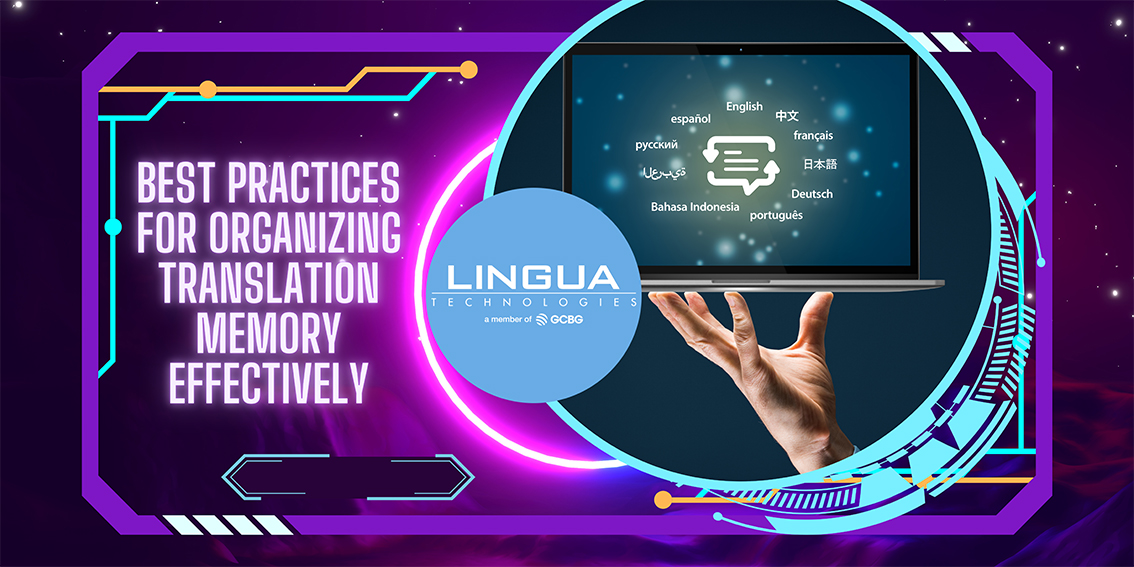In the fast-paced world of translation, where accuracy and efficiency are paramount, efficiently organizing Translation Memory (TM) is essential for streamlining workflows and maximizing productivity. Translation Memory, a powerful tool that stores previously translated segments, allows translators to leverage their work and maintain consistency. This blog post will explore essential guidelines for organizing TM effectively, ensuring smooth operations and high-quality translations. By implementing these best practices, translation companies can optimize their TM usage and achieve increased efficiency, improved consistency, and enhanced overall translation quality.
Create a consistent structure
Defining a standardized structure when establishing an organized TM database is crucial. This includes defining fields such as source language, target language, translation date, subject matter, client, and translator. By maintaining consistency in data organization, you can easily search and retrieve relevant translation segments, saving valuable time and effort.
Use a dedicated TM tool
Investing in a professional Translation Memory tool with robust features is essential for efficient TM management. Popular TM tools like SDL Trados Studio, memoQ, and Wordfast offer comprehensive functionalities for importing, exporting, and managing TMs. Leveraging these tools ensures seamless workflow integration and improved productivity.
Categorize TMs by subject matter
Grouping TMs based on subject matter or industry provides several benefits. For instance, creating separate TMs for legal, technical, medical, and marketing translations enables quick access to relevant translations for specific projects. Additionally, it ensures consistency within specific domains, maintaining high-quality translations across related materials.
Create separate TMs for each client
For translation companies working with multiple clients, maintaining separate TMs for each client offers several advantages. This approach allows accurate adaptation to each client's specific terminology and preferences, ensuring client satisfaction. Moreover, having client-specific TMs guarantees confidentiality and data protection. Consider creating separate TM databases for different clients, projects, or subject areas to facilitate better organization and easier management.
Standardize naming conventions
Developing a consistent naming convention for TM files is crucial for efficient TM organization. Include relevant information such as client name, project name, language pair, and date in the naming convention. Consistent naming practices simplify identifying and retrieving specific translation projects, enhancing overall productivity.
Establish a workflow
Creating a clear workflow for working with TM is essential. Document the steps involved in importing new translations, updating existing entries, and exporting translations for future projects. By ensuring all team members are aware of and follow the workflow, you can streamline operations and minimize errors.
Implement version control
Maintaining different versions of TMs allows for effective tracking of updates, revisions, and improvements. Version control is particularly useful in tracking changes made by different translators, ensuring the utilization of the latest and most accurate translations.
Regularly clean and update TMs
Periodic review and cleanup of TMs are essential for maintaining their integrity and quality. Remove duplicate or outdated translations, fix inconsistencies, and update terminology as needed. This process enhances the accuracy and relevance of the TM, ultimately improving translation outcomes.
Collaborate with translators
Encourage translators to actively contribute to the TM by regularly importing their translations and updating the database. This collaborative approach fosters a sense of ownership and ensures a larger pool of high-quality translations for future projects. It also promotes consistency and improves overall translation quality.
Maintain a termbase
In addition to TM, creating and maintaining a termbase or glossary of industry-specific terms is highly beneficial. Linking the TM with a termbase enhances translation consistency and accuracy, ensuring precise usage of domain-specific terminology.
Regularly back up your TM
Establishing a robust backup system is crucial to safeguard against accidental loss or corruption. Regularly back up your TM database and store the backups securely to protect valuable translation assets.
Train translators on TM usage
Provide comprehensive training and guidelines to translators on effectively using the TM tool. This includes importing and exporting translations and adhering to the established TM structure. Encouraging translators to leverage the TM improves consistency, efficiency, and overall translation quality.
Efficient organization of Translation Memory is vital for translation companies seeking to optimize their workflows and deliver high-quality translations consistently. By following these best practices, including creating a consistent structure, using dedicated TM tools, categorizing TMs, standardizing naming conventions, establishing workflows, implementing version control, regularly cleaning and updating TMs, collaborating with translators, maintaining a termbase, backing up TMs, and training translators, you can enhance translation efficiency, improve consistency, and elevate overall translation quality. Embracing these guidelines will undoubtedly pave the way for success in the dynamic world of translation.

